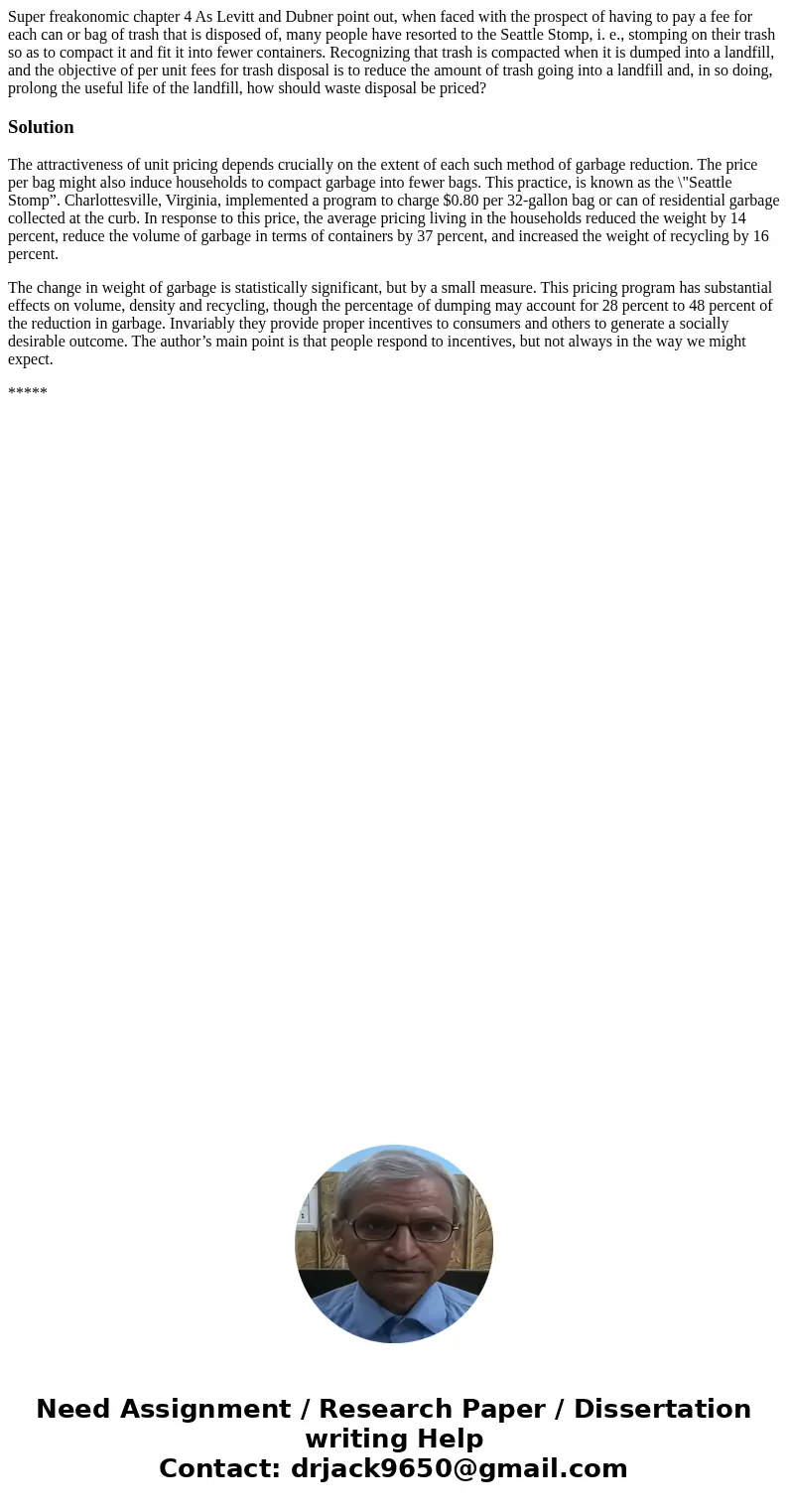Super freakonomic chapter 4 As Levitt and Dubner point out w
Super freakonomic chapter 4 As Levitt and Dubner point out, when faced with the prospect of having to pay a fee for each can or bag of trash that is disposed of, many people have resorted to the Seattle Stomp, i. e., stomping on their trash so as to compact it and fit it into fewer containers. Recognizing that trash is compacted when it is dumped into a landfill, and the objective of per unit fees for trash disposal is to reduce the amount of trash going into a landfill and, in so doing, prolong the useful life of the landfill, how should waste disposal be priced?
Solution
The attractiveness of unit pricing depends crucially on the extent of each such method of garbage reduction. The price per bag might also induce households to compact garbage into fewer bags. This practice, is known as the \"Seattle Stomp”. Charlottesville, Virginia, implemented a program to charge $0.80 per 32-gallon bag or can of residential garbage collected at the curb. In response to this price, the average pricing living in the households reduced the weight by 14 percent, reduce the volume of garbage in terms of containers by 37 percent, and increased the weight of recycling by 16 percent.
The change in weight of garbage is statistically significant, but by a small measure. This pricing program has substantial effects on volume, density and recycling, though the percentage of dumping may account for 28 percent to 48 percent of the reduction in garbage. Invariably they provide proper incentives to consumers and others to generate a socially desirable outcome. The author’s main point is that people respond to incentives, but not always in the way we might expect.
*****

 Homework Sourse
Homework Sourse